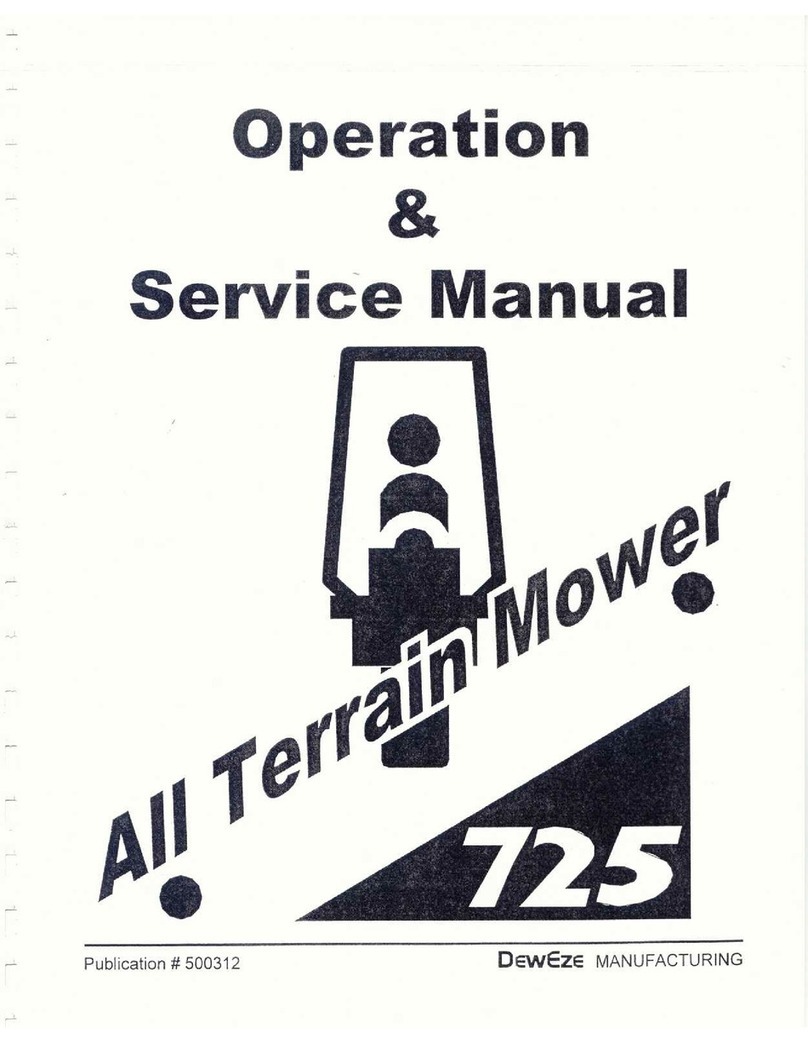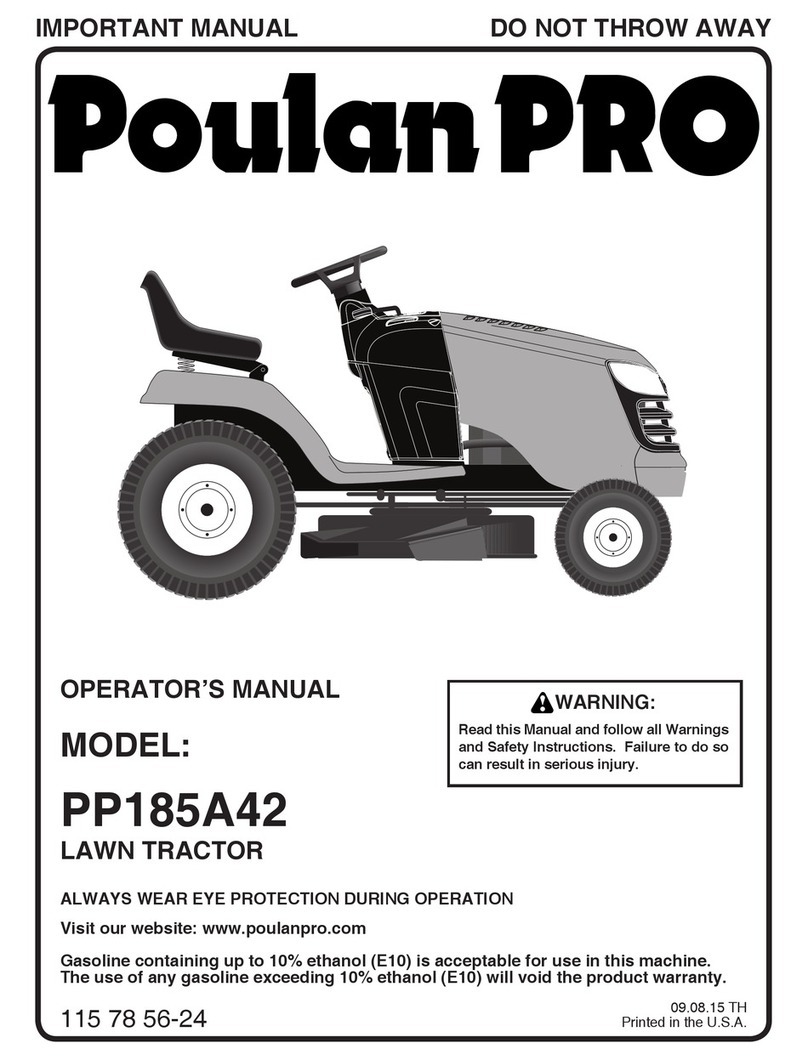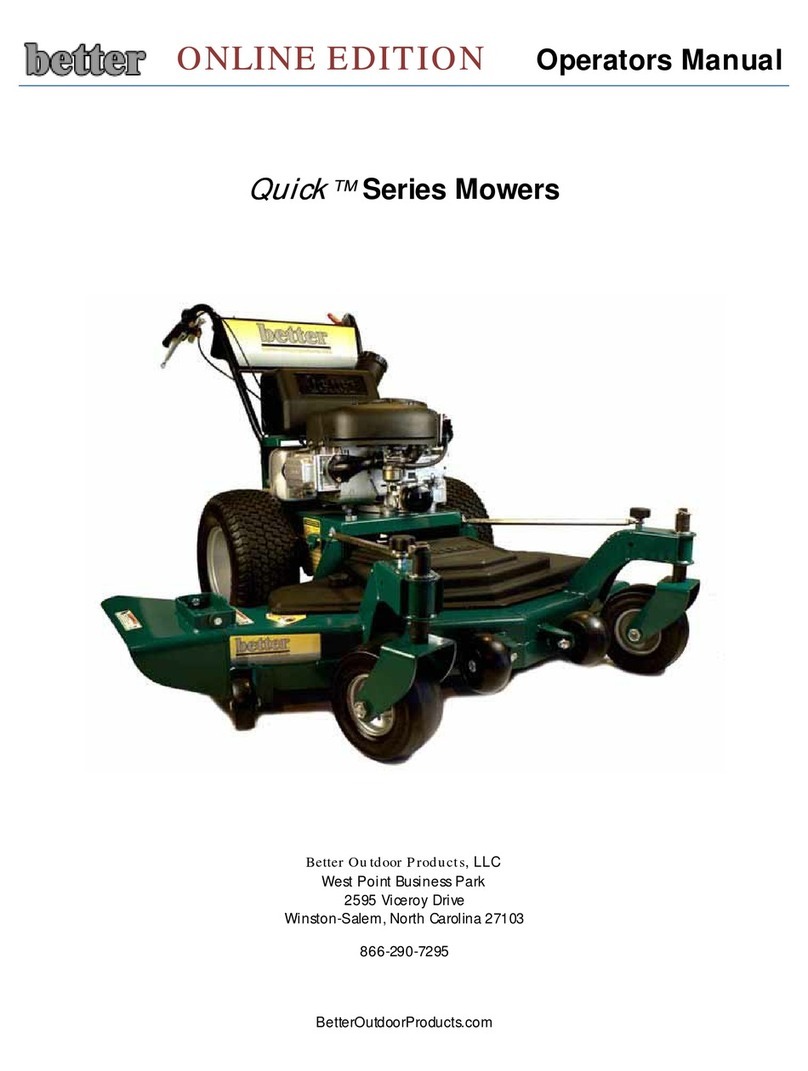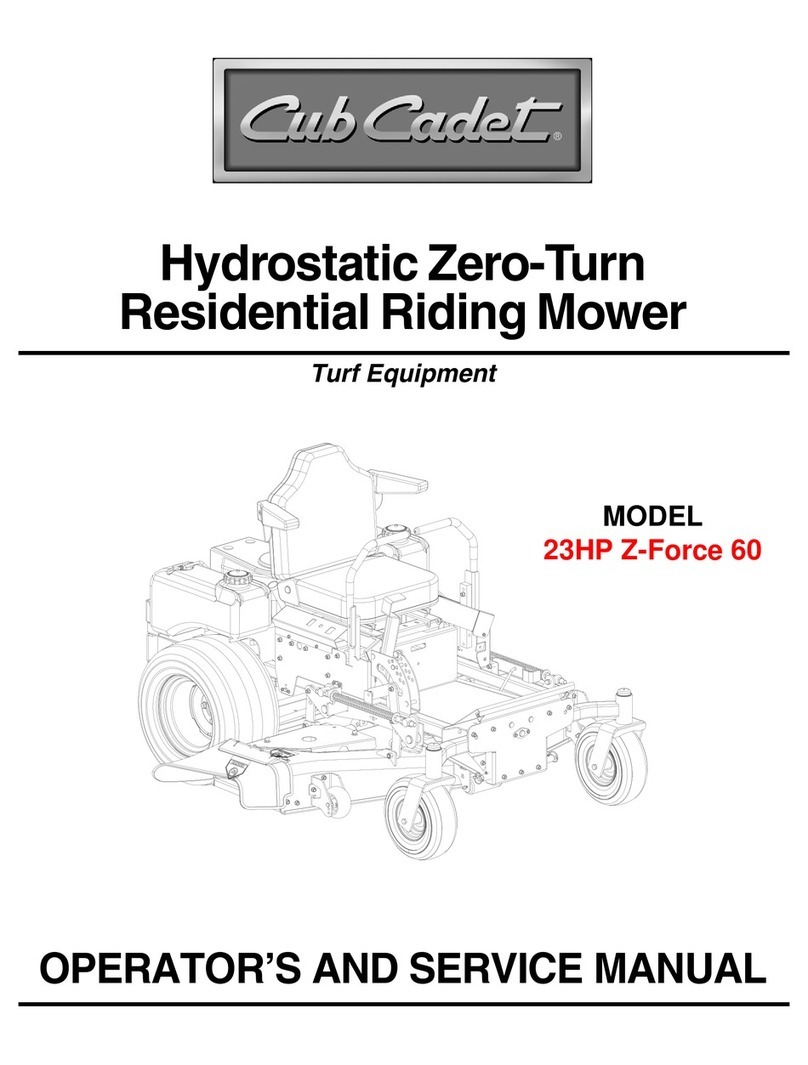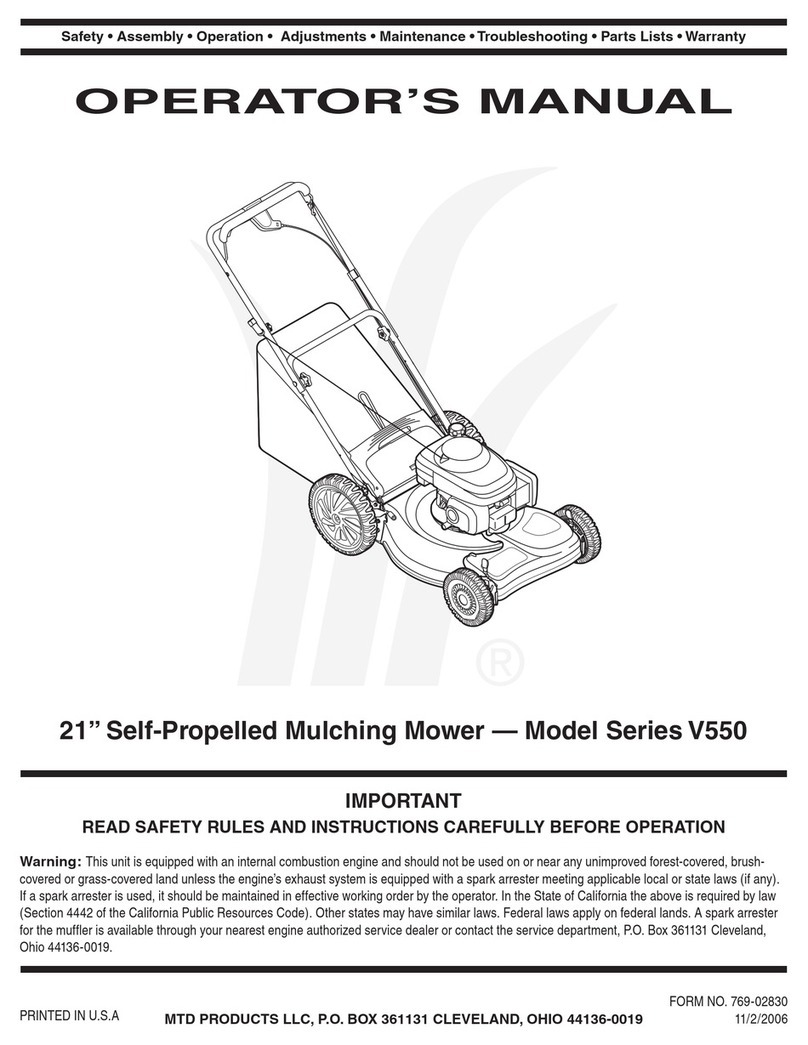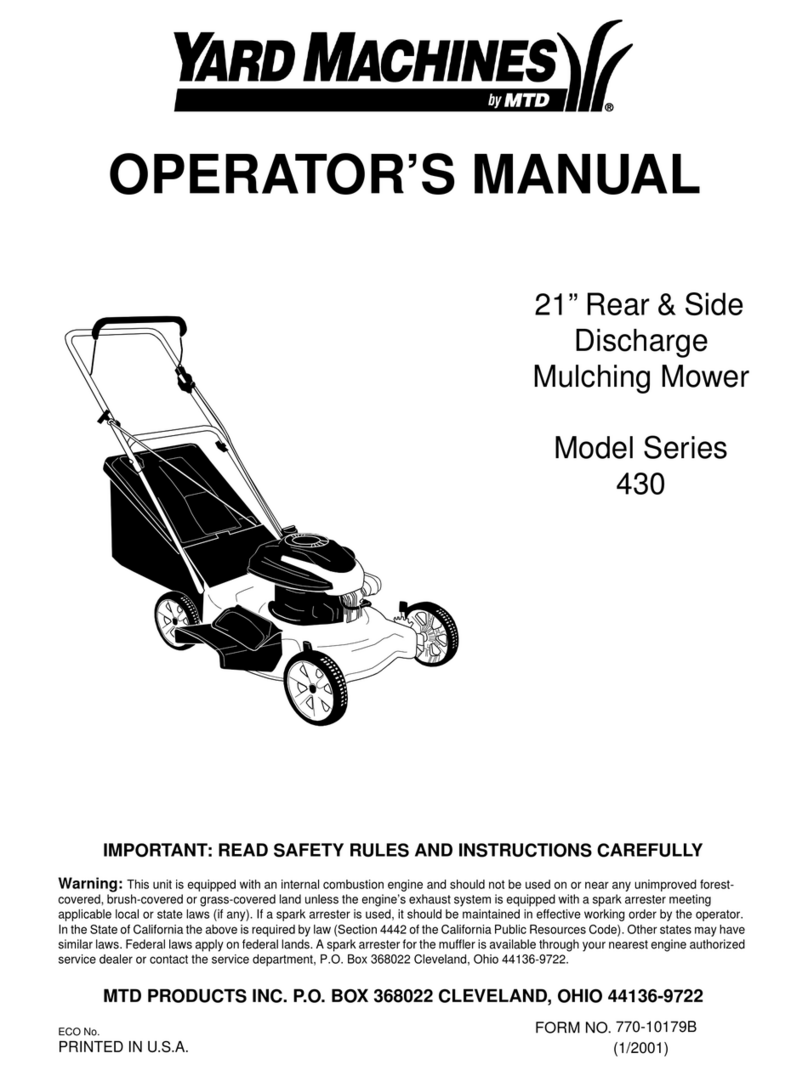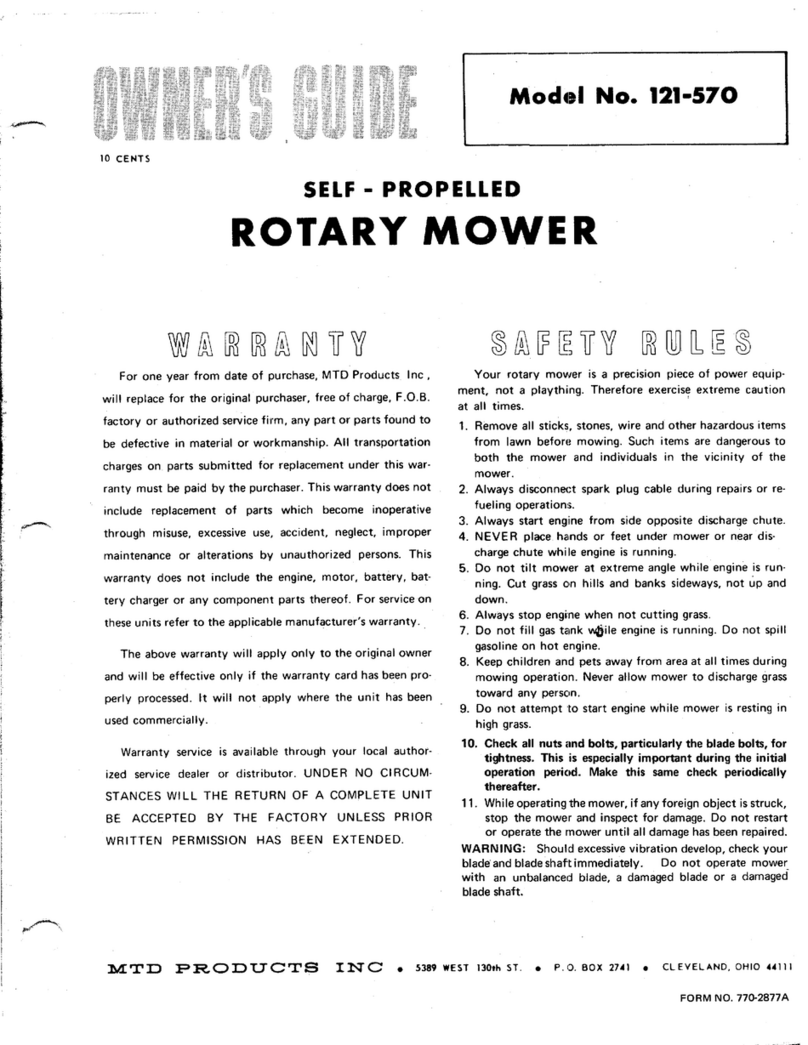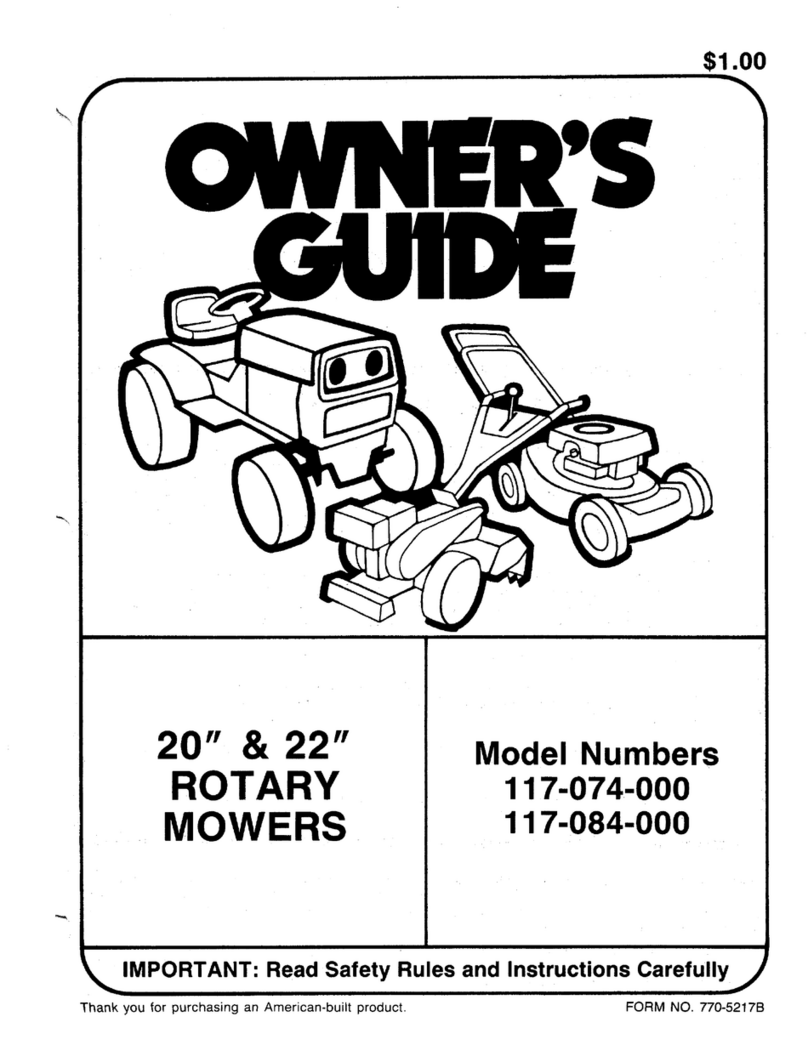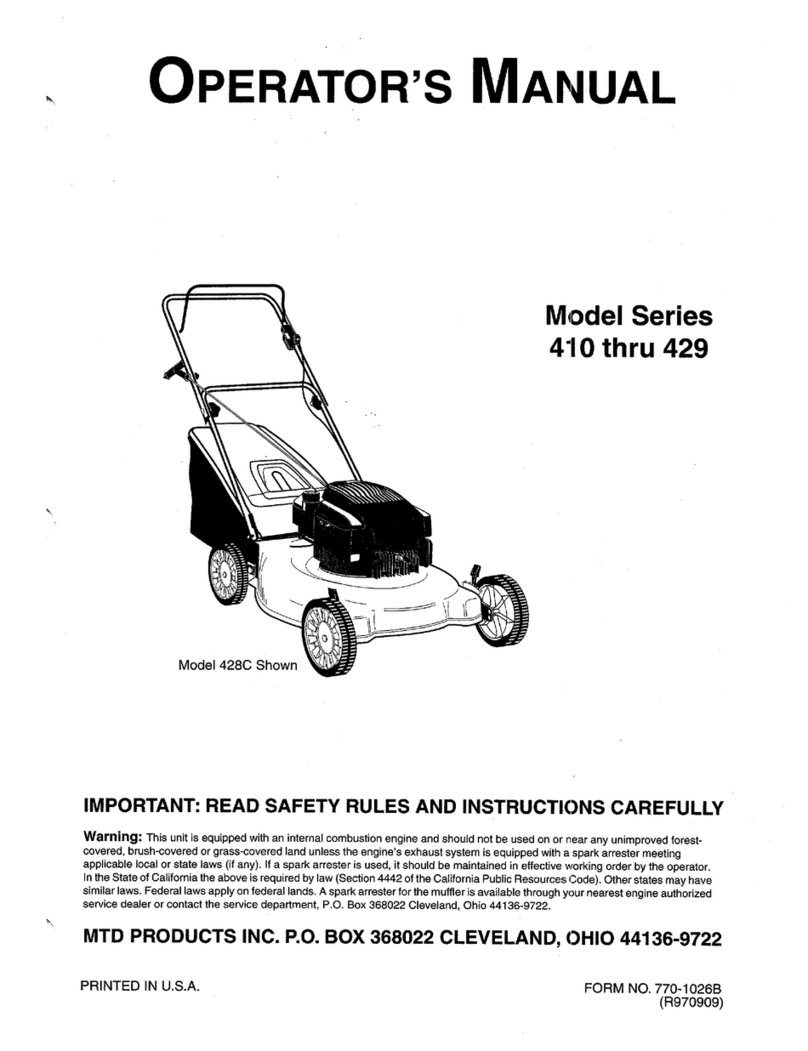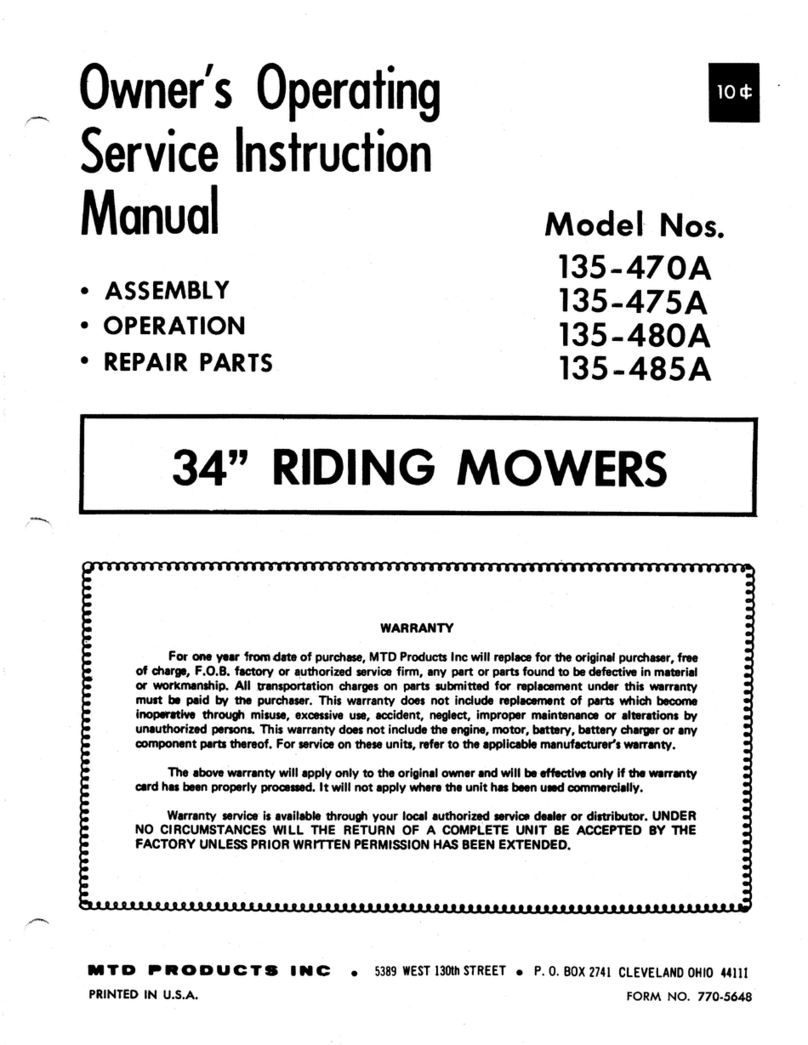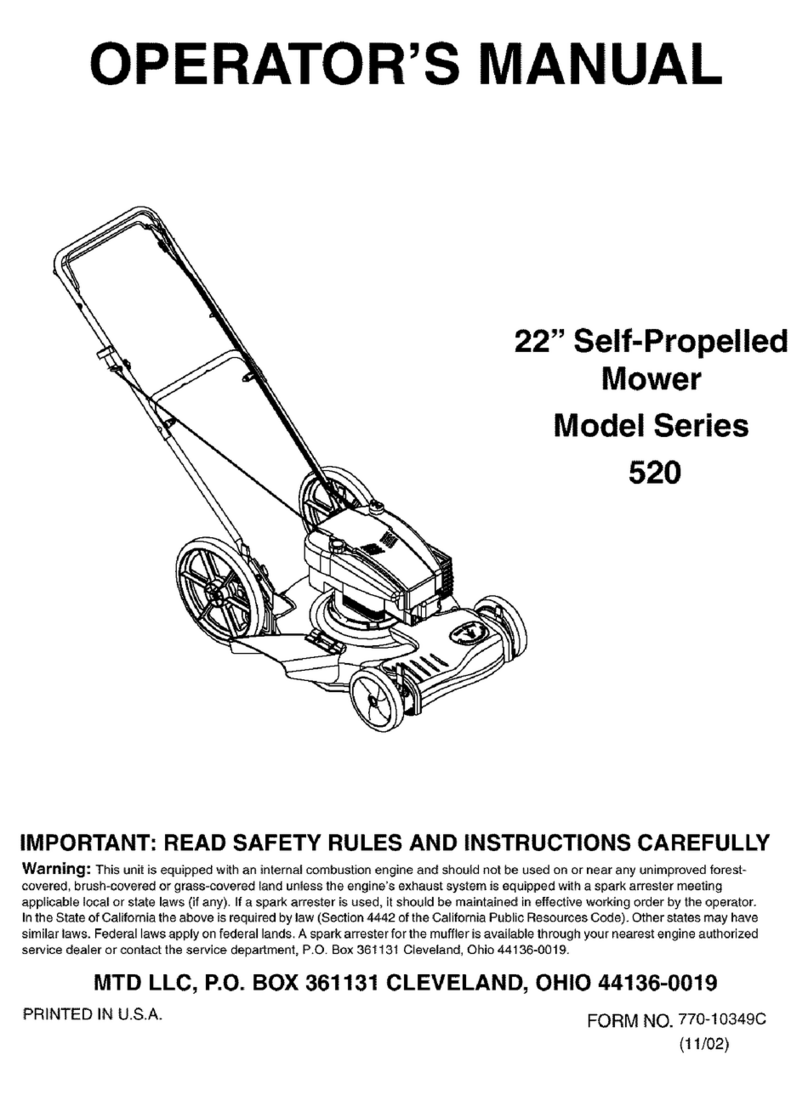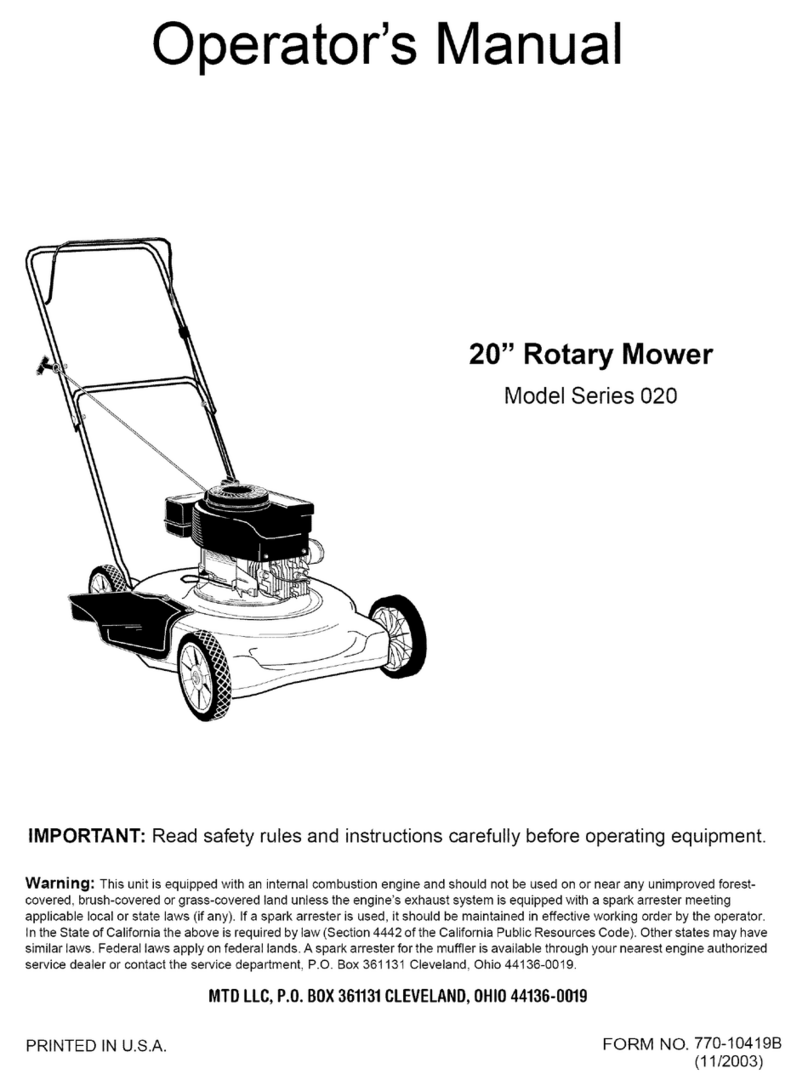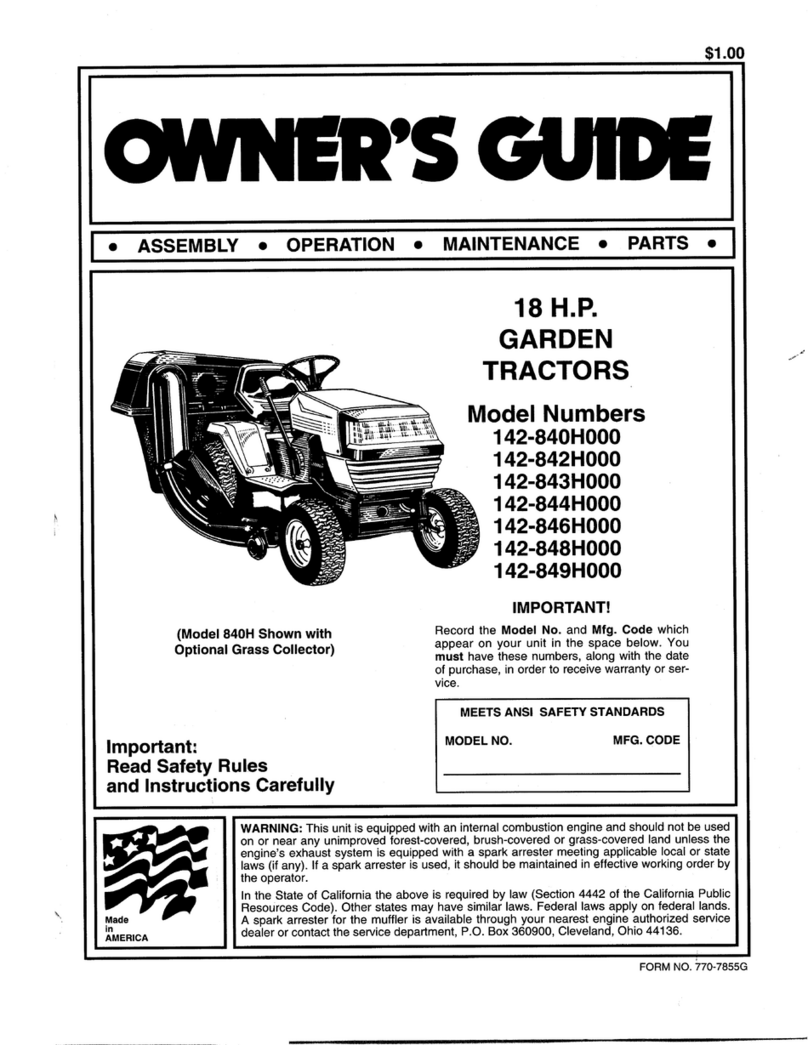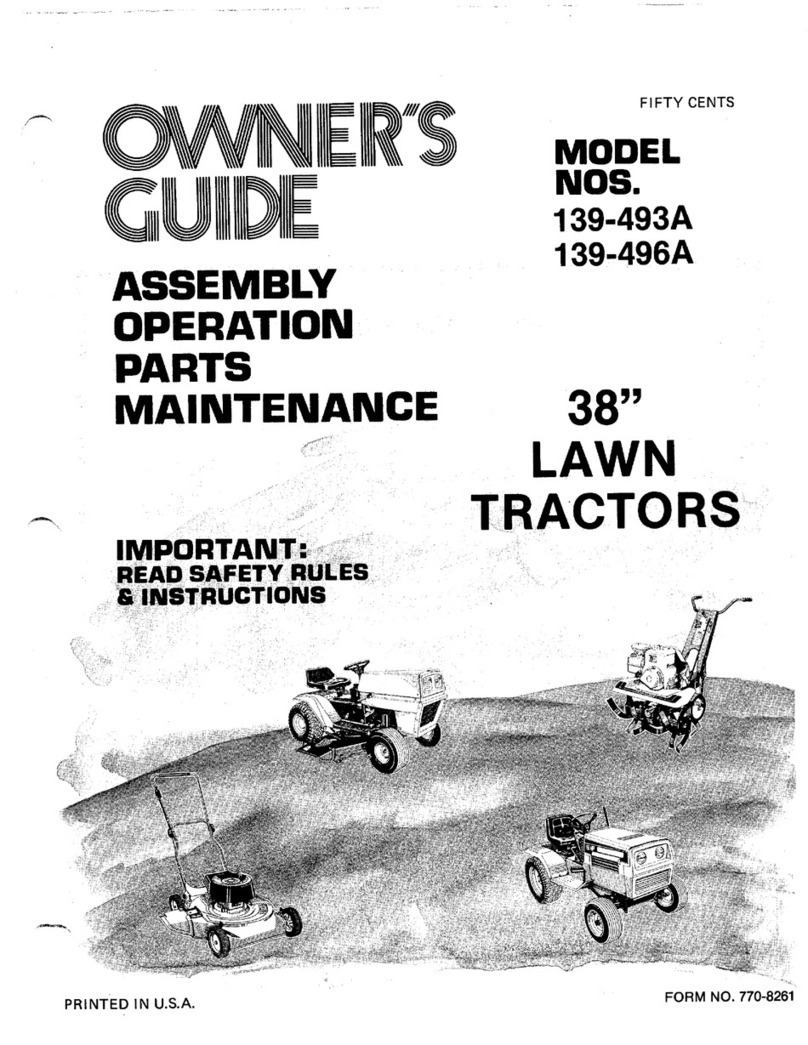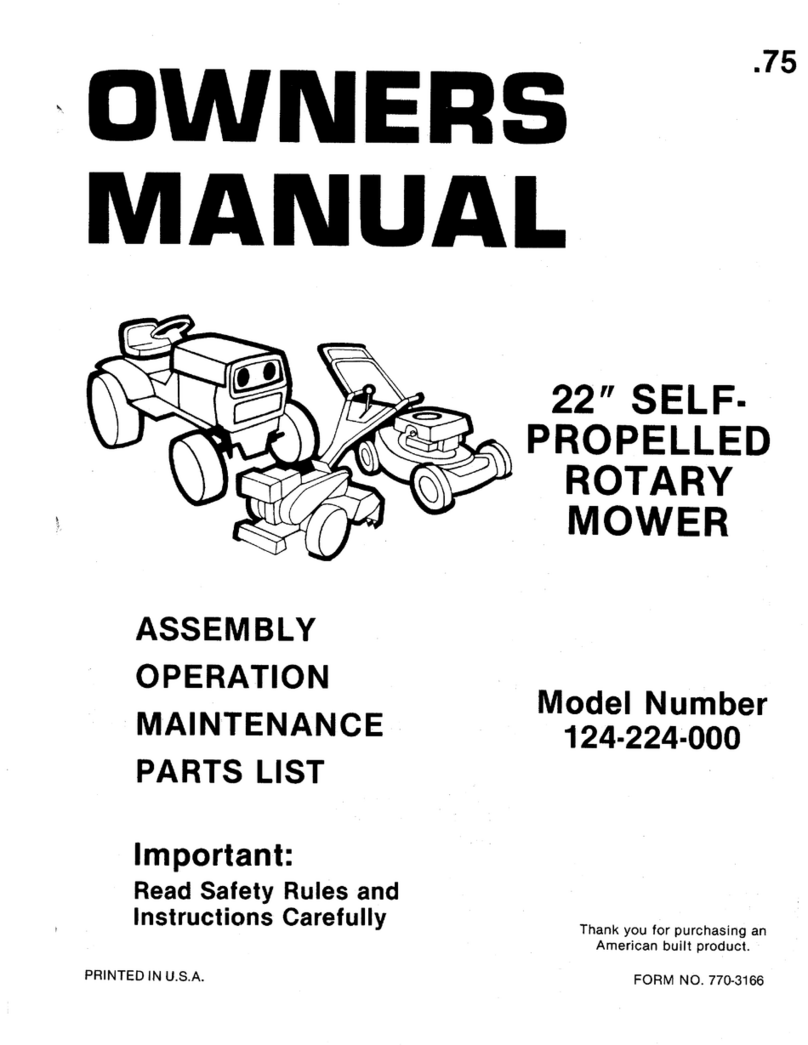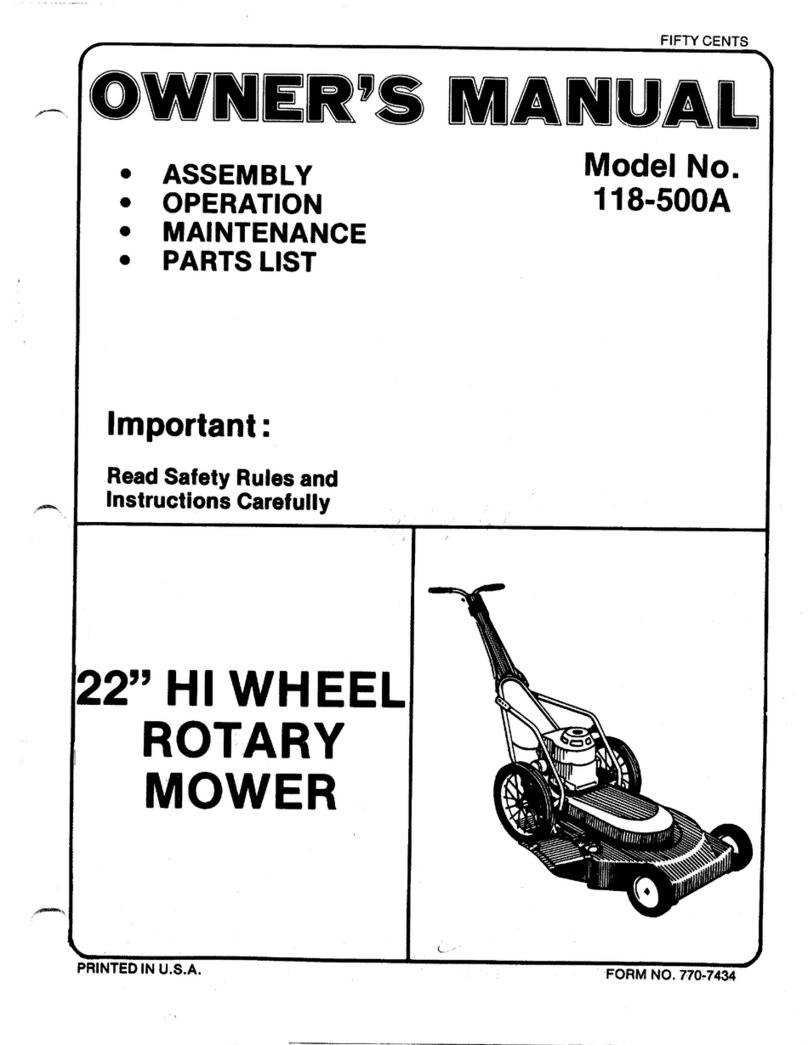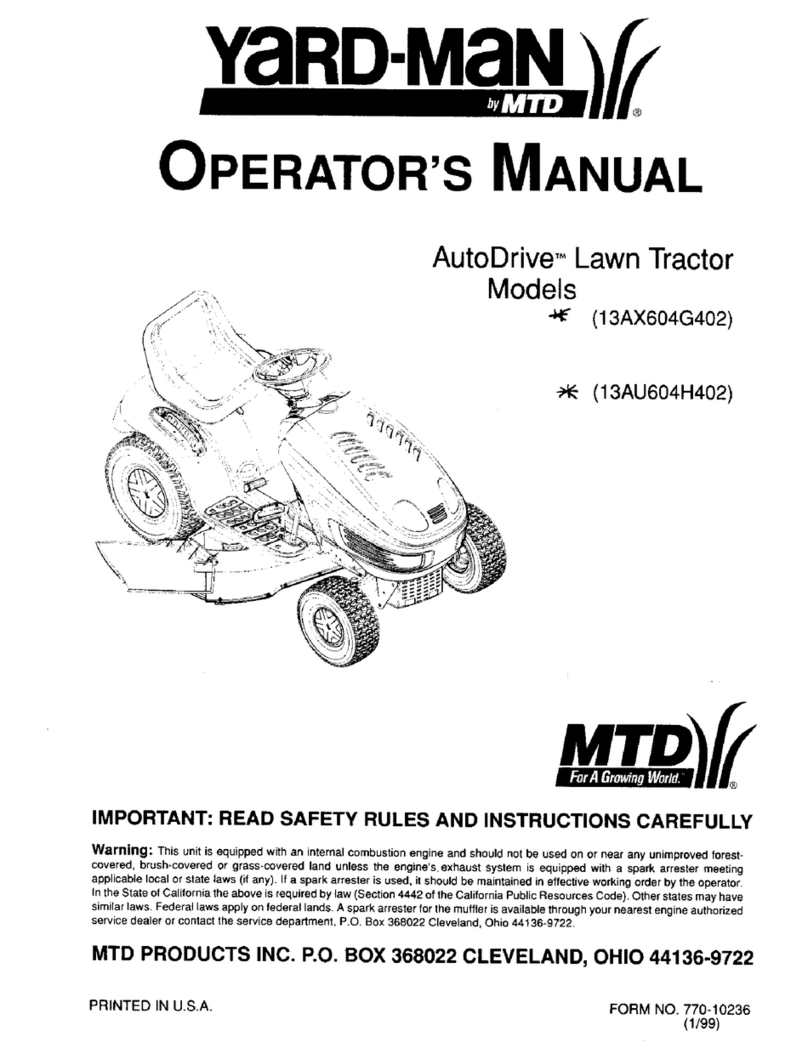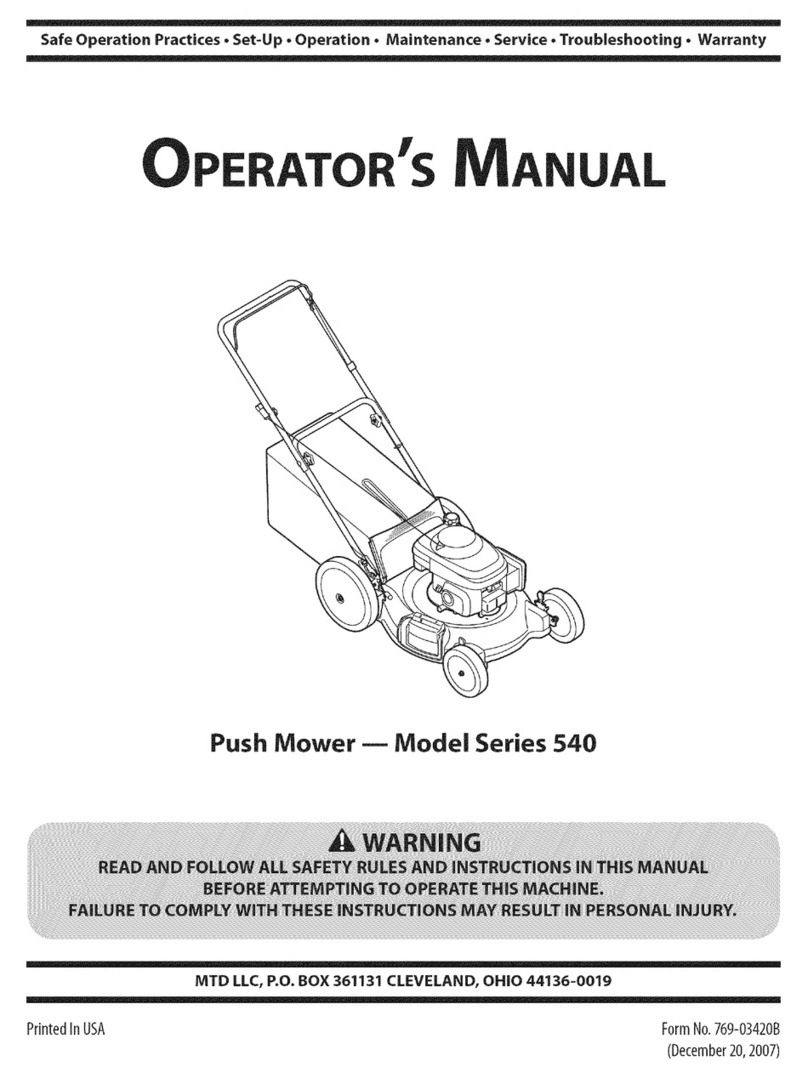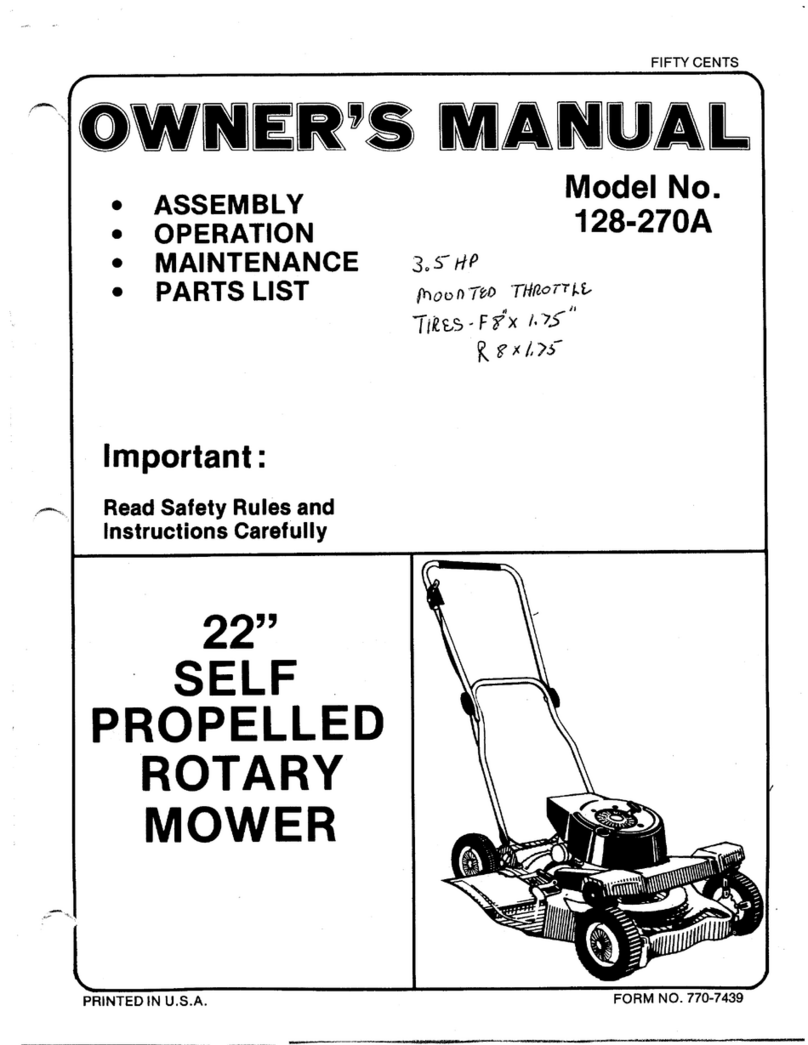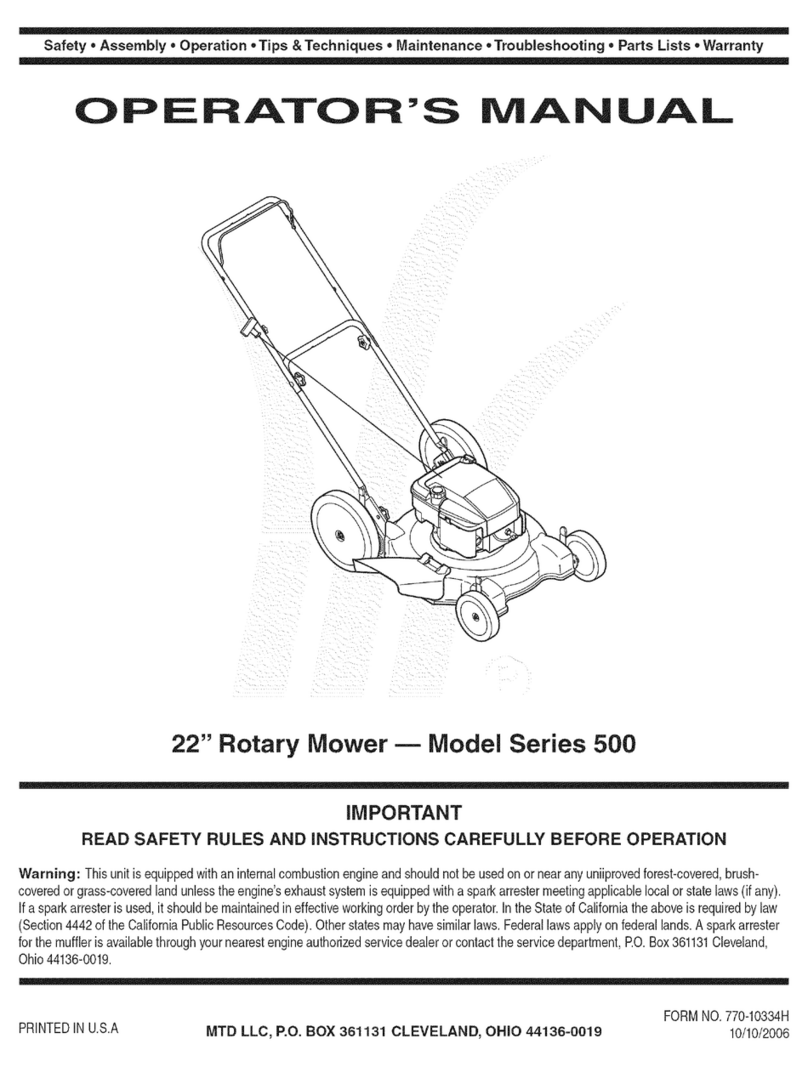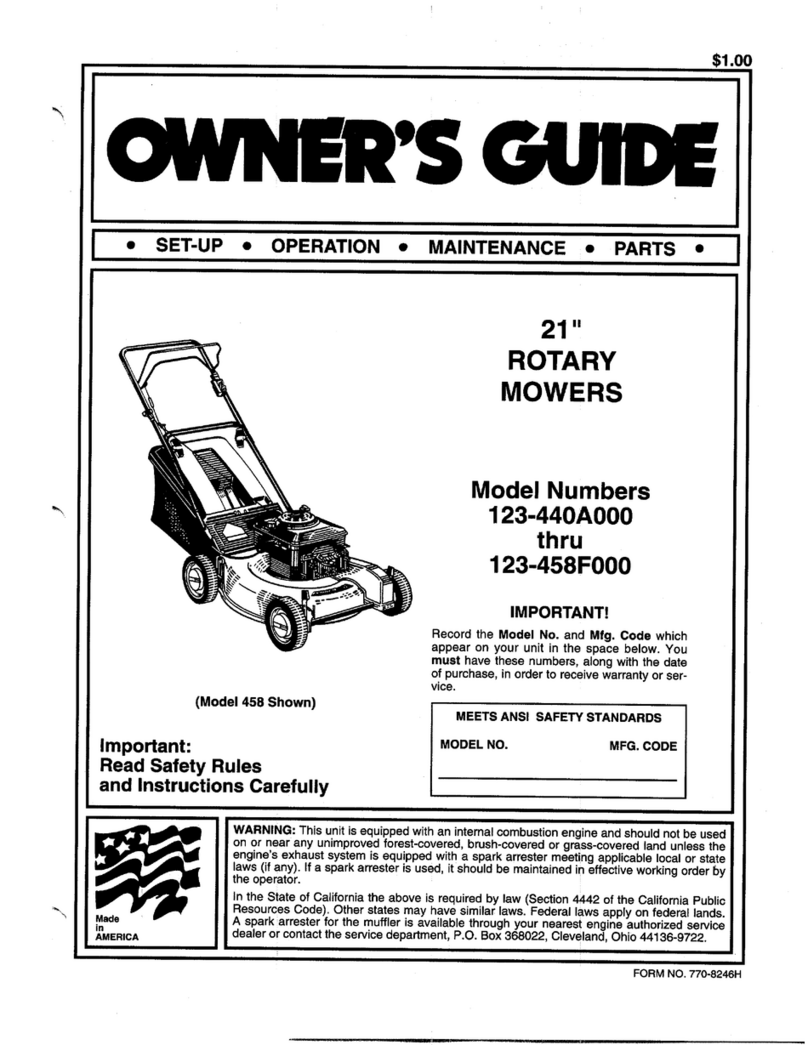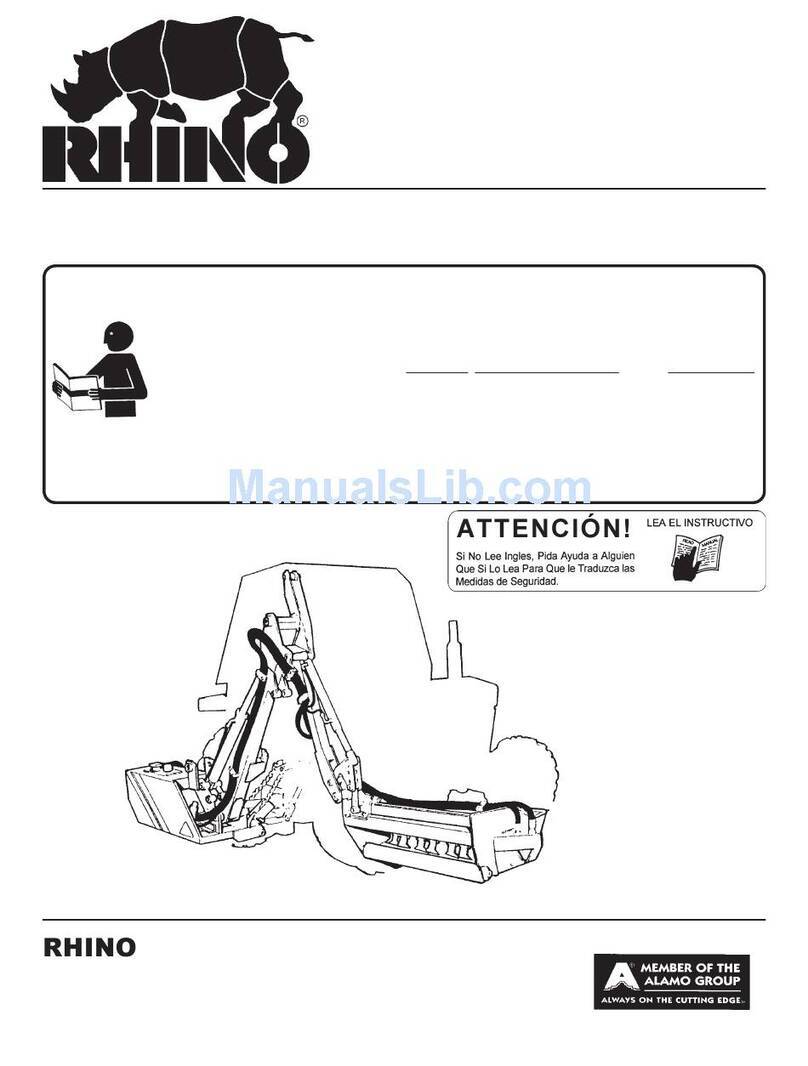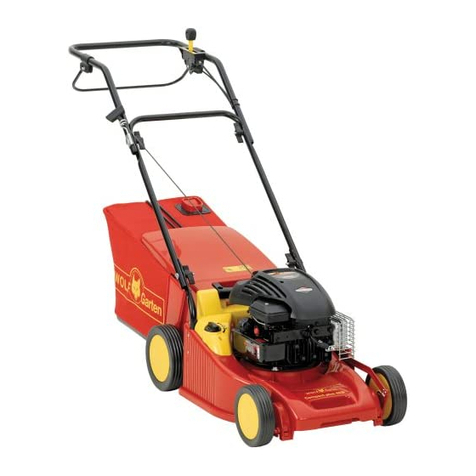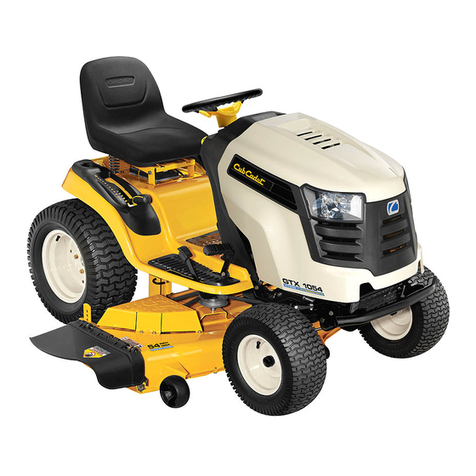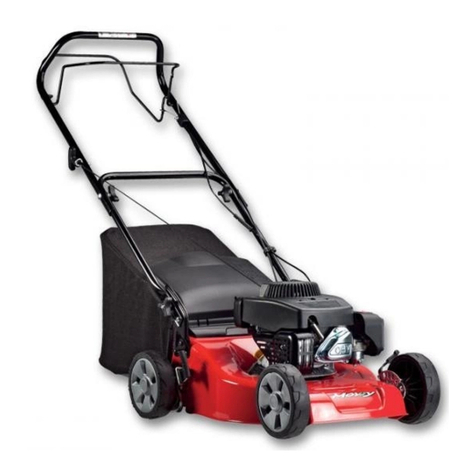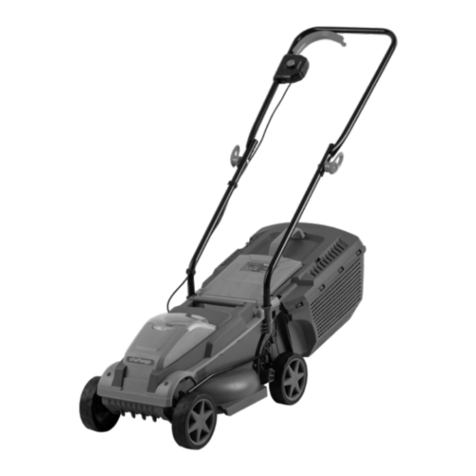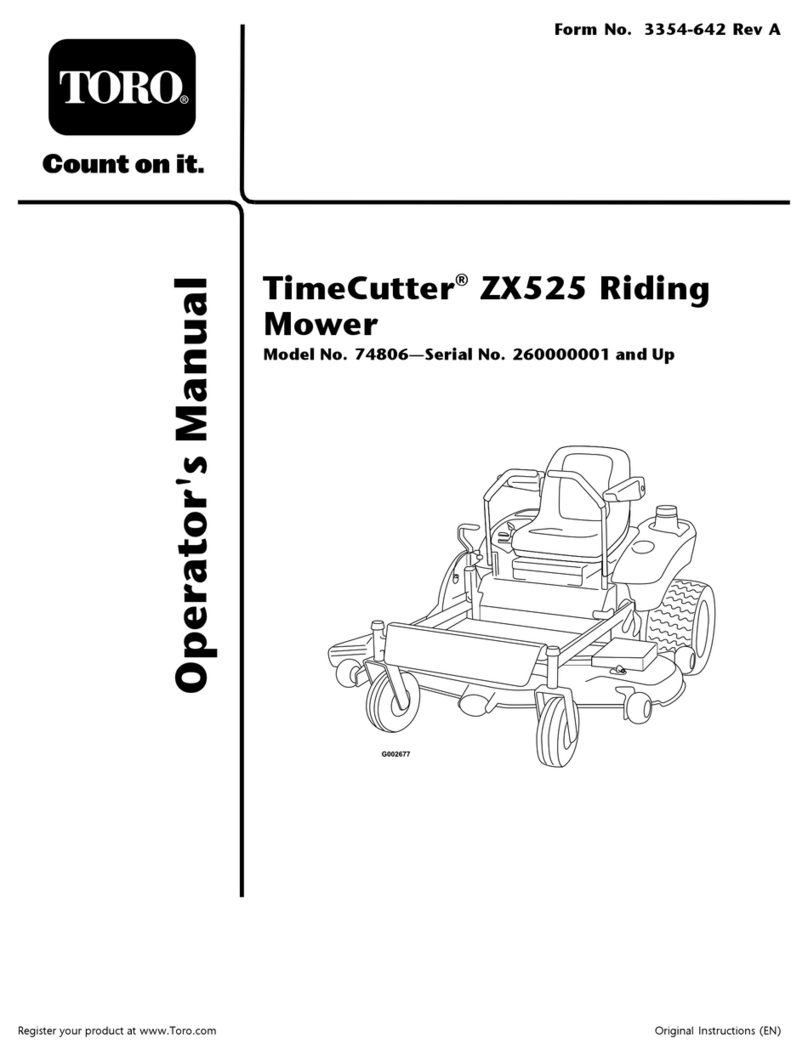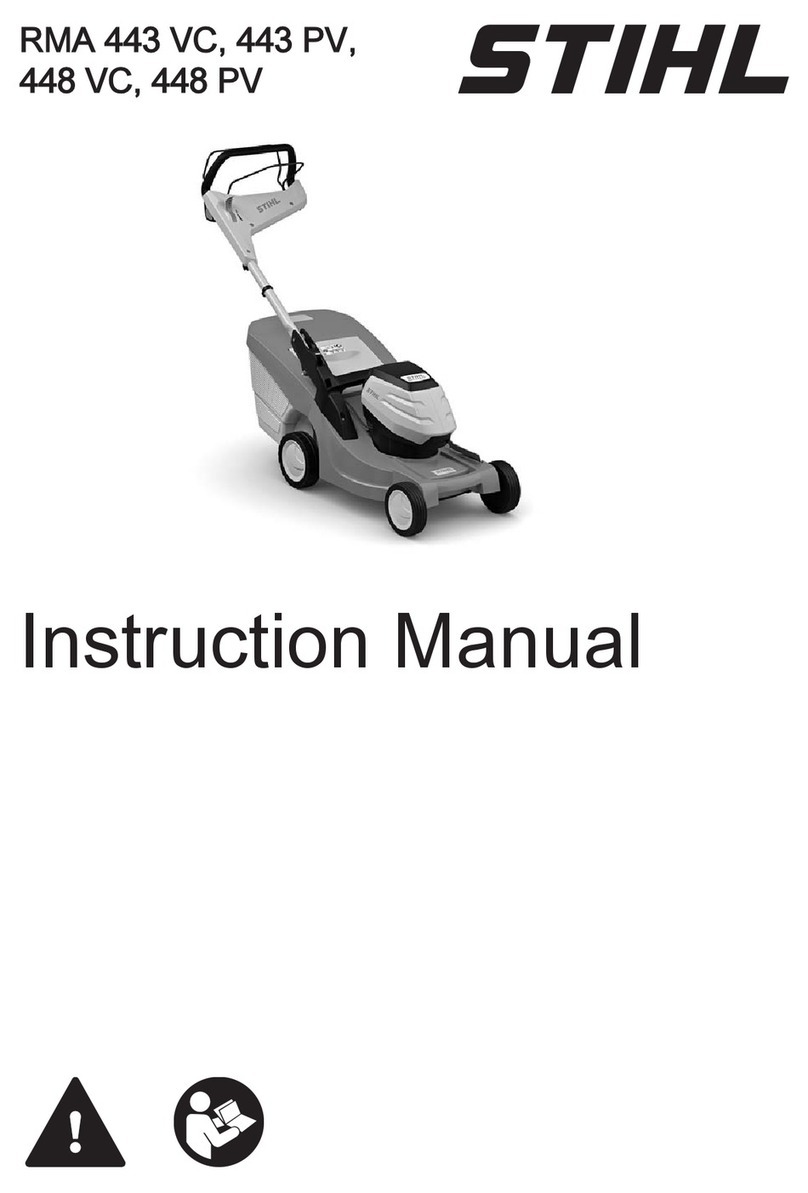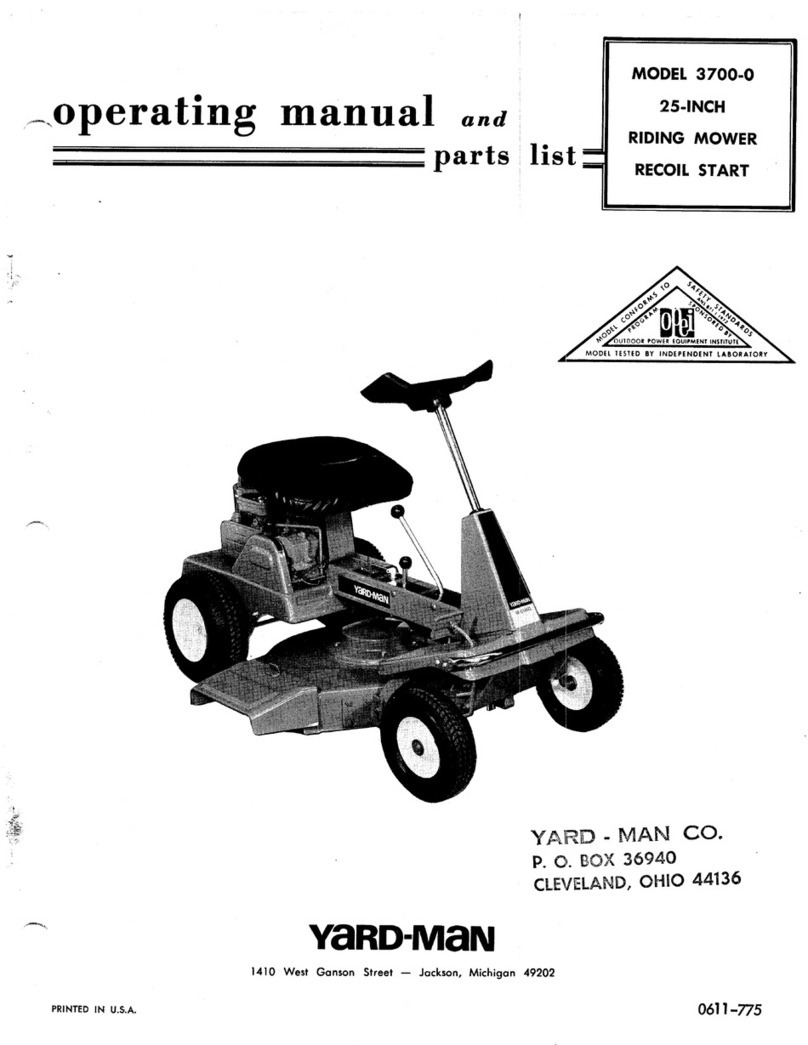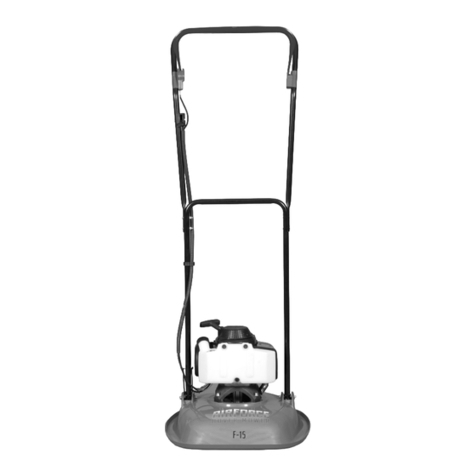
4se c t i O n 2 — iM p O r t a n t sa f e Op e r a t i O n pr a c t i c e s
A missing or damaged discharge cover can cause blade12.
contact or thrown object injuries.
Many injuries occur as a result of the mower being pulled13.
over the foot during a fall caused by slipping or tripping.
Do not hold on to the mower if you are falling; release the
handle immediately.
Never pull the mower back toward you while you are14.
walking. If you must back the mower away from a wall or
obstruction first look down and behind to avoid tripping
and then follow these steps:
Step back from mower to fully extend your arms.a.
Be sure you are well balanced with sure footing.b.
Pull the mower back slowly, no more than half way c.
toward you.
Repeat these steps as needed.d.
Do not operate the mower while under the influence of15.
alcohol or drugs.
Do not engage the self-propelled mechanism on machines16.
so equipped while starting engine.
The blade control is a safety device. Never attempt to17.
bypass its operation. Doing so makes the safety device
inoperative and may result in personal injury through
contact with the rotating blade. The blade control must
operate easily in both directions and automatically return
to the disengaged position when released.
Never operate the mower in wet grass. Always be sure of18.
your footing. A slip and fall can cause serious personal
injury. If you feel you are losing your footing, release the
blade control handle immediately and the blade will stop
rotating within three seconds.
Mow only in daylight or good artificial light. Walk, never19.
run.
Stop the blade when crossing gravel drives, walks or roads.20.
If the equipment should start to vibrate abnormally, stop21.
the engine and check immediately for the cause. Vibration
is generally a warning of trouble.
Shut the engine off and wait until the blade comes to22.
a complete stop before removing the grass catcher or
unclogging the chute. The cutting blade continues to
rotate for a few seconds after the blade control is released.
Never place any part of the body in the blade area until you
are sure the blade has stopped rotating.
Never operate mower without proper trail shield,23.
discharge cover, grass catcher, blade control or other safety
protective devices in place and working. Never operate
mower with damaged safety devices. Failure to do so can
result in personal injury.
Muffler and engine become hot and can cause a burn. Do24.
not touch.
Never attempt to make a wheel or cutting height25.
adjustment while the engine is running.
Only use parts and accessories made for this machine by 26.
the manufacturer. Failure to do so can result in personal
injury.
When starting engine, pull cord slowly until resistance27.
is felt, then pull rapidly. Rapid retraction of starter cord
(kickback) will pull hand and arm toward engine faster than
you can let go. Broken bones, fractures, bruises or sprains
could result.
If situations occur which are not covered in this manual,28.
use care and good judgement. Contact Customer Support
for assistance or the name of the nearest service dealer.
Slope Operation
Slopes are a major factor related to slip and fall accidents, which
can result in severe injury. Operation on slopes requires extra
caution. If you feel uneasy on a slope, do not mow it. For your
safety, use the slope gauge included as part of this manual to
measure slopes before operating this machine on a sloped or
hilly area. If the slope is greater than 15 degrees, do not mow it.
Do:
Mow across the face of slopes; never up and down. Exercise1.
extreme caution when changing direction on slopes.
Watch for holes, ruts, rocks, hidden objects, or bumps2.
which can cause you to slip or trip. Tall grass can hide
obstacles.
Always be sure of your footing. A slip and fall can cause3.
serious personal injury. If you feel you are losing your
balance, release the blade control handle immediately and
the blade will stop rotating within three (3) seconds.
Do Not:
Do not mow near drop-offs, ditches or embankments, you1.
could lose your footing or balance.
Do not mow slopes greater than 15 degrees as shown on2.
the slope gauge.
Do not mow on wet grass. Unstable footing could cause3.
slipping.
Children
Tragic accidents can occur if the operator is not alert to the
presence of children. Children are often attracted to the mower
and the mowing activity. They do not understand the dangers.
Never assume that children will remain where you last saw them.
Keep children out of the mowing area and under watchful1.
care of a responsible adult other than the operator.
Be alert and turn mower off if a child enters the area.2.
Before and while moving backwards, look behind and 3.
down for small children.
Use extreme care when approaching blind corners,4.
doorways, shrubs, trees, or other objects that may obscure
your vision of a child who may run into the mower.
Keep children away from hot or running engines. They can5.
suffer burns from a hot muffler.
Never allow children under 14 years of age to operate this6.
machine. Children 14 and over should read and understand
the instructions and safe operation practices in this manual
and on the machine and be trained and supervised by an
adult.

